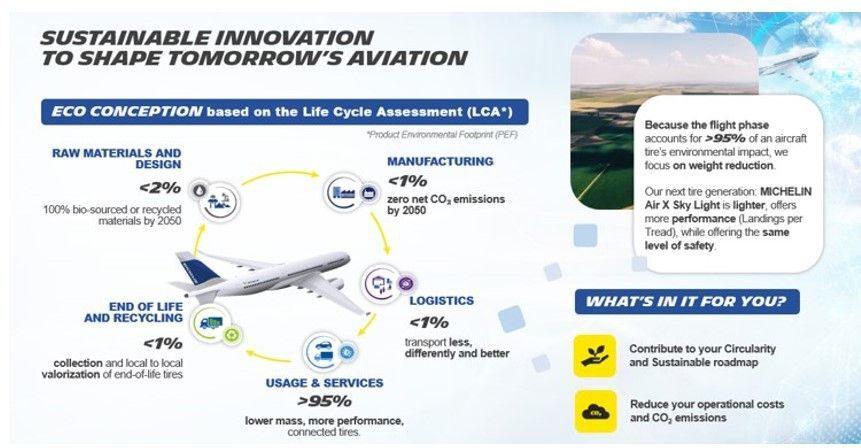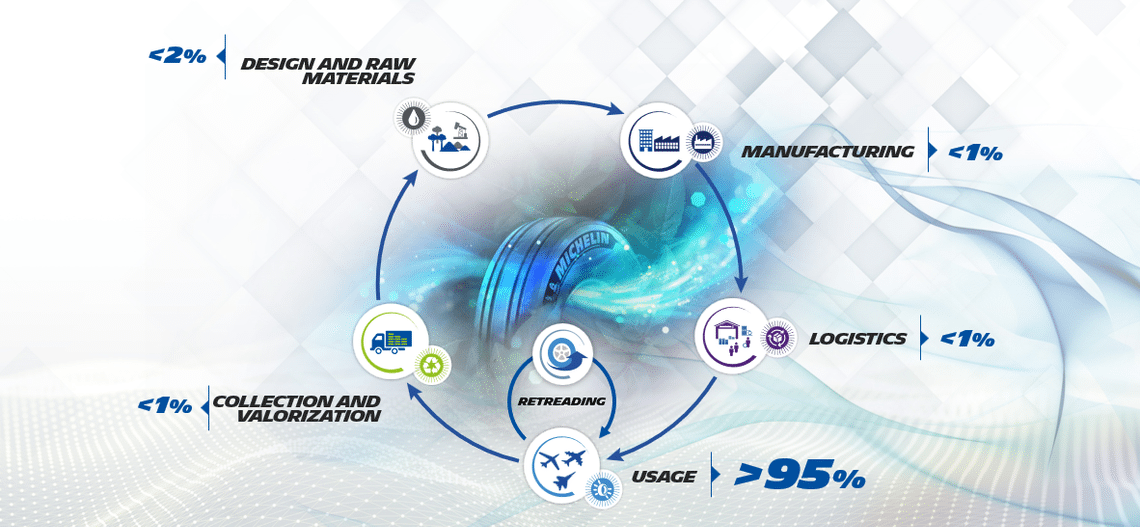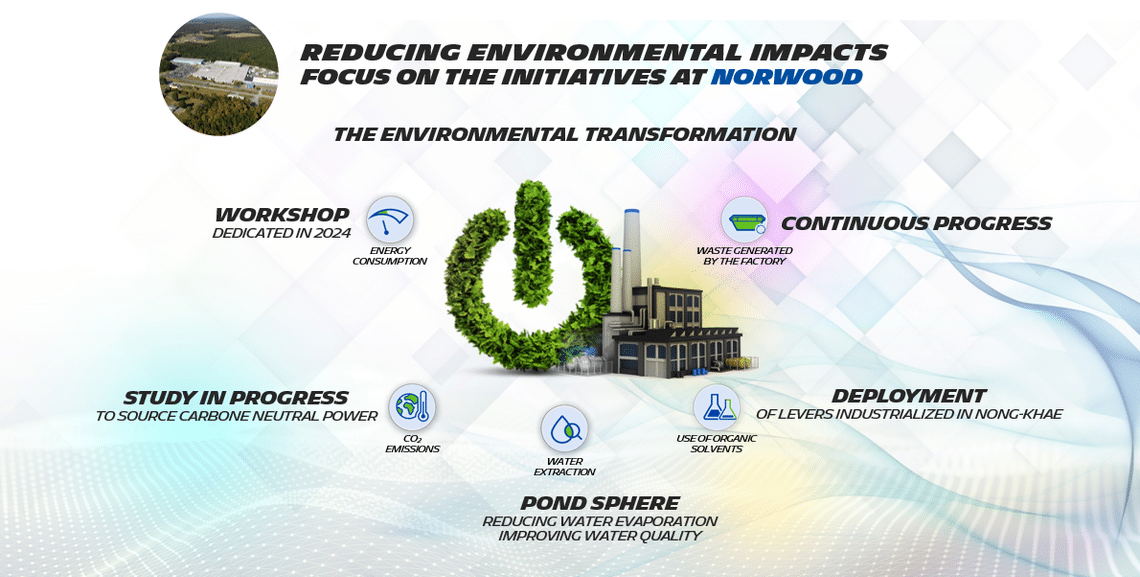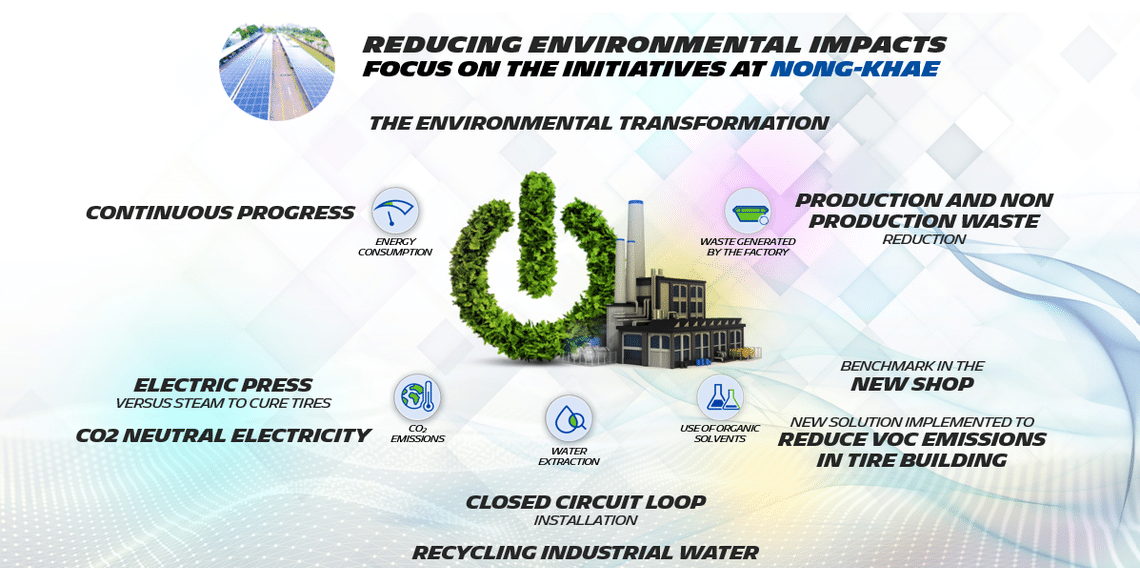Environmental Commitment
The Aeronautical Industry is undergoing major mutation due to climate change
By 2040, air travel passengers will double, more and more customers aspire to air travel.
At the same time, the IATA (International Air Transport Association) has approved a resolution whereby the global air transport industry agrees to achieve net zero carbon emissions by 2050.
As a result, the aeronautical industry is undergoing major mutation due to climate change: the need to reduce environmental impacts.

How to effectively reduce the aircraft tire's environmental footprint?
At Michelin, we take into account the entire product life cycle when we design our tires.
Michelin has assessed its environmental footprint diagnostic using a standard tool: Life Cycle Assessment (LCA), from the extraction of the raw materials to the end-of-life treatment.
Each stage of the life cycle is assessed according to 16 environmental impacts, the 4 most impactful of which are: climate change, photo chemical ozone, acidification, and resource use fossils.
The answer from Michelin Aircraft Tires
Reducing the environmental footprint must be done by addressing all the life cycle stages together.
More than 95% of an aircraft tire's environmental footprint is made during the flight phase.

Environmental Commitment
Michelin Aircraft Tire is firmly committed to contributing to improving the aviation industry’s environmental impact by answering to 2 major structural trends:
The design and the mass: by designing lighter, longer-lasting tires more LPT (Landing Per Tread).
The use phase: by developing services that make the most of tires.
Without sacrificing end-of-life collect and recycling phases.
Raw Materials
Manufacturing sustainability: Norwood

Manufacturing sustainability: Bourges

Manufacturing sustainability: Nong Khae
